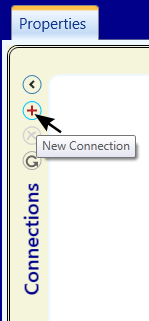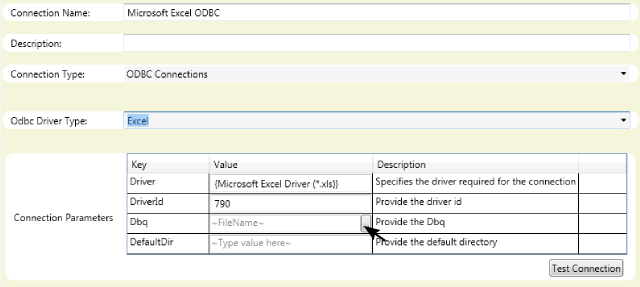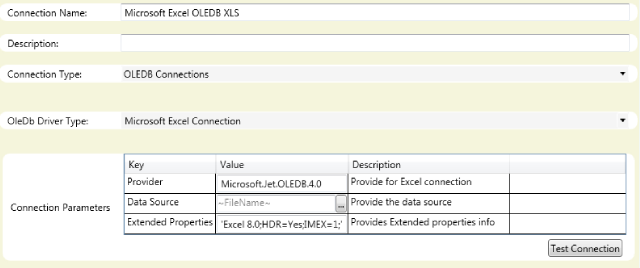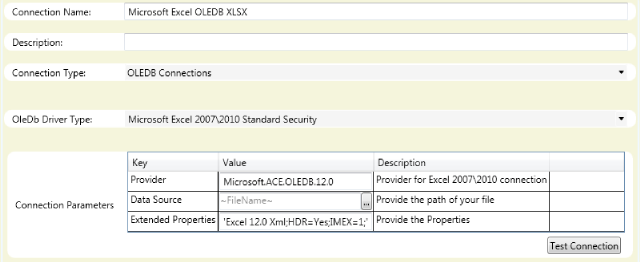Warnings for Working with Microsoft Excel in a Server Environment
Microsoft Excel is designed as a desktop, single-user application. However, you can access information held inside these spreadsheets with DataConnect using ODBC and OLEDB technologies.
There are some very important steps you must follow for a succesful DataConnect Excel deployment. If you do not follow the steps in the guide, you will have problems.
Using Excel for testing and development is ok, but we would highly recommend migrating the data to a proper database for a production environment.
Configuring a Microsoft Excel Connection in DataConnect
Flynet DataConnect can connect to both Microsoft Excel file formats, xls and xlsx. If you have Microsoft Excel installed on your desktop, you will have the necessary drivers installed to access Excel spreadsheets. For more information about Excel data drivers, see our Excel guide.
DataConnect can connect to Excel using ODBC or OLEDB (dependent on having the drivers installed).

Create a New Connection
Flynet DataConnect offers the Full Experience for Microsoft Excel. This means you can create queries using a tile-based drag and drop interface.
To create a connection to a Microsoft Excel spreadsheet, make sure you are on the Connections tab. Then press the (+) icon at the very left hand side of the window.
Give your Connection a Name and Type
You then need to give your connection a name, and optionally a description.
You now have the option to use OLEDB or OLEDB for your Connection Type. If you are unsure which to use, make sure you read our Excel guide.
Select the Driver Type and Locate the File on your Computer
Select the connection technology and the file type you wish to use:



